
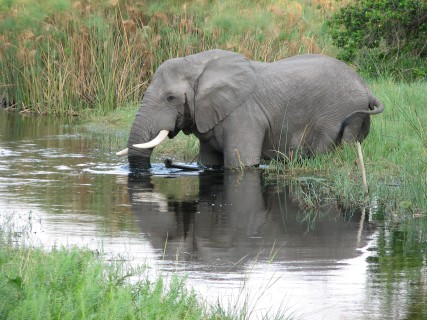
We actually got to sleep in a little bit, as the boat trips don't last as long as most game drives. The sunrise, as usual, was great. We ate breakfast, packed up (we didn't really unpack), and left our gratuity, not knowing what was in store. We got on the water at about 7:15 in the morning. As we were leaving, Thompson could not find his coat, and said "I'm getting too wise too quickly." This was in response to his comment the day before about how older people are revered in Botswana. Apparently only older people can be "wise," as younger people are merely "clever." While waiting for Thompson to find his coat, we watched an elephant cross the stream right in front of the camp.
 |
 |
We went out on a powerboat, eventually reaching (and crossing) the Boro River, cutting through papyrus lined channels at pretty good speed, like something out of a James Bond film. The water was very shallow, and the channels were very narrow, so we had to lean in towards the center so we wouldn't get whacked by papyrus at high speed.
After about 30 minutes, we came upon two islands fully of birds, one with open-billed storks and another with African Darters, Reed Cormorants, and palm swifts – some were chicks. The open-billed storks were not very good and taking off or landing, but just sitting there they were very majestic.
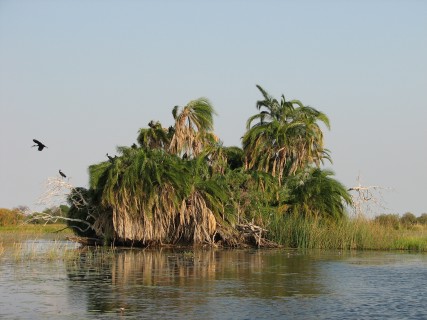 |
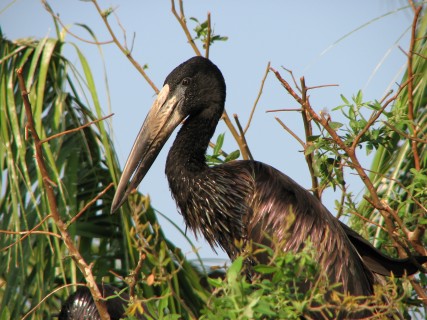 |
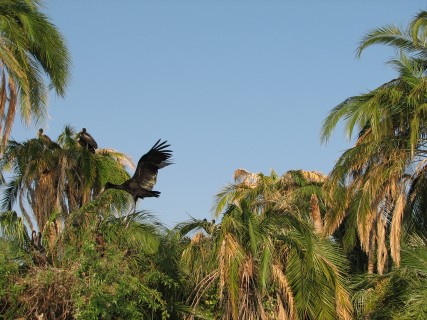 |
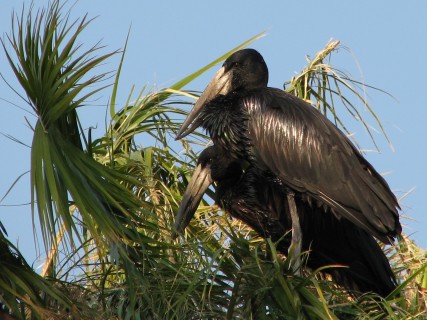 |
We headed back to the Boro River , then up north before heading east and heading into channels leading us towards Chief's Island. Things were very nice, and the boat ride was very cool, but things soon got much more interesting. First, we saw a bunch of Red Lechwe jumping across the channel right in front of us. Then Matt, while piloting us around, spotted a baby Lechwe with its mom. It could not walk yet, which Thompson told us indicated it was less than 30 minutes old. It also seemed to not know how to feed yet. We watched it for about 10 minutes, then from out behind us we heard a ton of noise and splashing, and saw a Cape Buffalo crashing through the water, not more than 15 feet behind our boat – he had been there the whole time, hidden in a palm island.
 |
 |
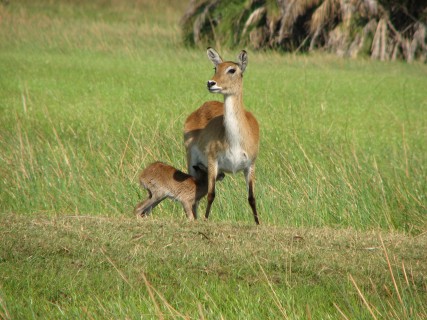 |
 |
We headed on – passing some more birds, including a saddle-billed stork, and came upon some hippos, one of which charged our boat – Crystal had asked that morning to be scared at least once during the trip, and she got it.
After that, we started to see many more hippos, plus a ton of birds, including saddle-billed storks, yellow-billed storks, jacanas, white-faced whistling doves, spur-winged geese, squak herons, and on and on and on. The highlights included:
 |
 |
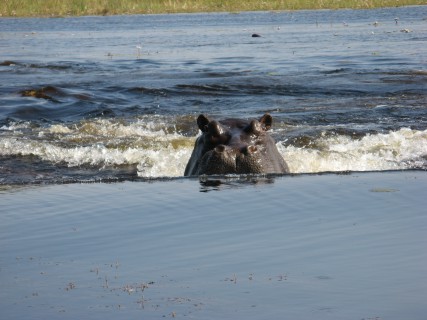 |
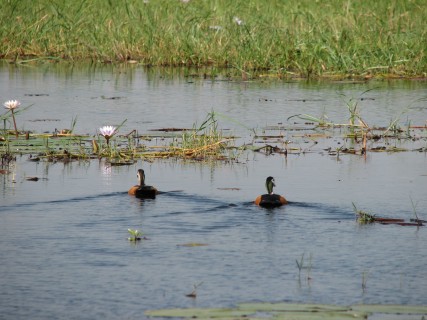 |
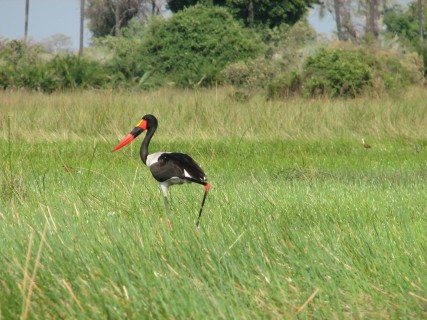 |
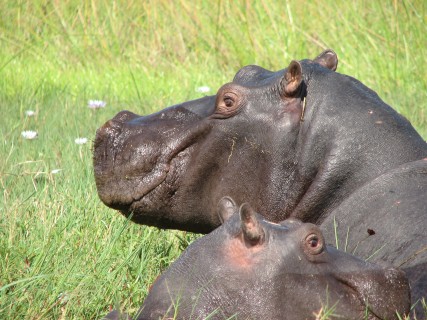 |
 |
 |
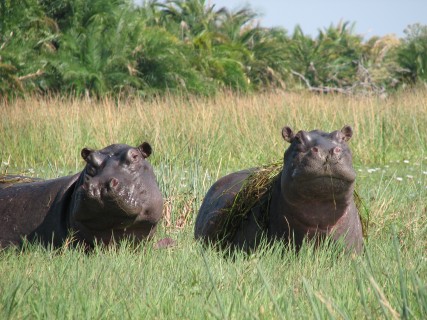 |
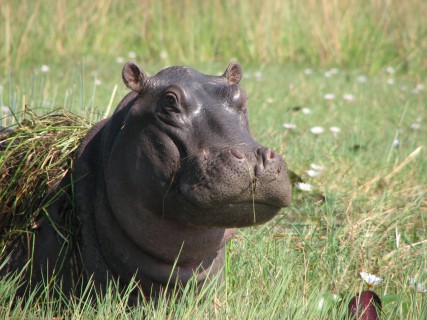 |
 |
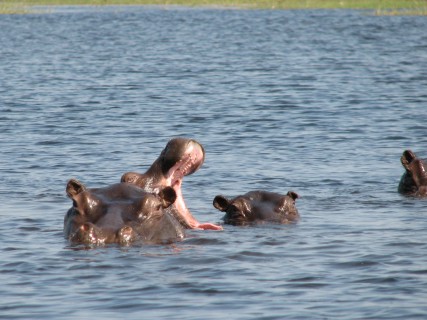 |
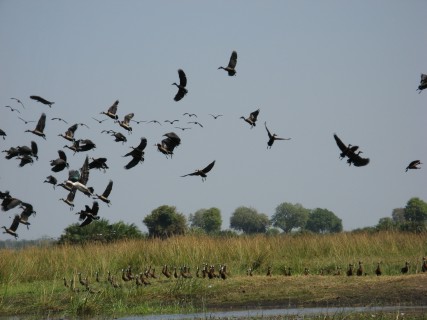 |
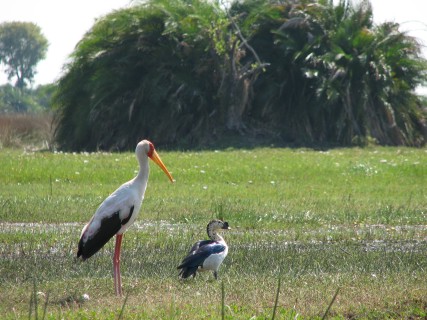 |
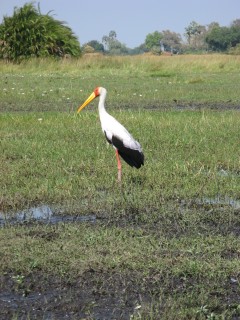 |
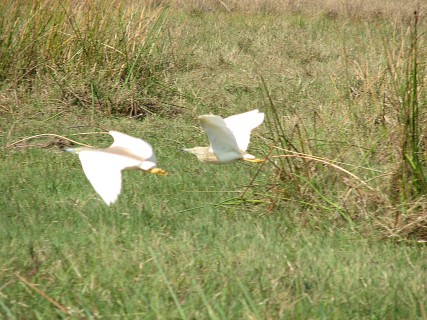 |
 |
 |
 |
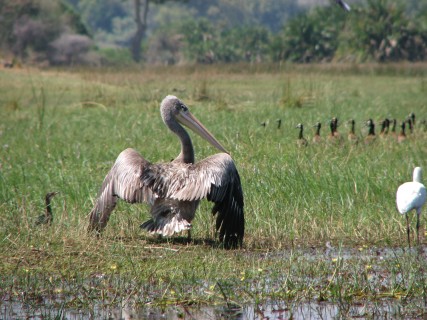 |
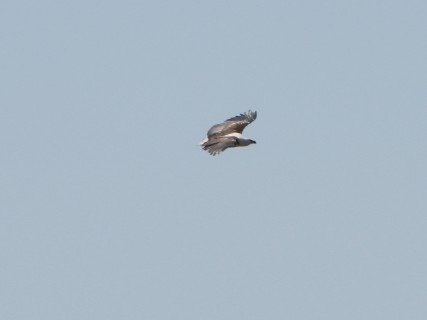 |
The channels had lots of fish in them, including 2 foot long catfish. Once we got near Chief's Island we started to see all sorts of game on the land, in addition to the dozens of birds all around – Antelope of all kinds, Baboons, Giraffe, Hyena, Elephants, Zebra. At one point there were zebra, lechwe, geese, and cormorants congregated around one another. There also was a gigantic baobab tree – the antelope gave us some context as to its size. We came upon a big group of elephants drinking and eating the reeds – stayed around them for about 10 minutes. Some highlights included:
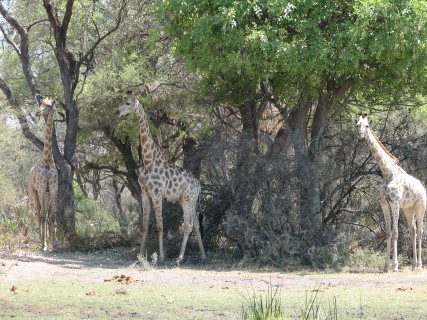 |
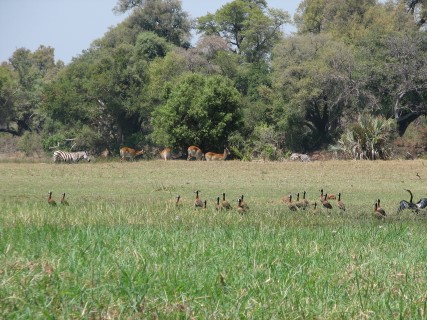 |
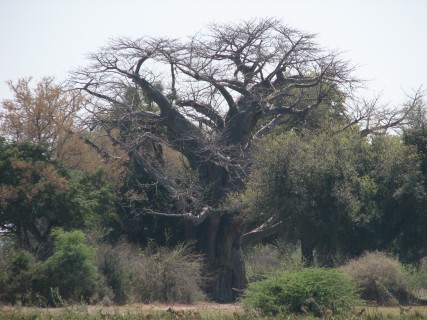 |
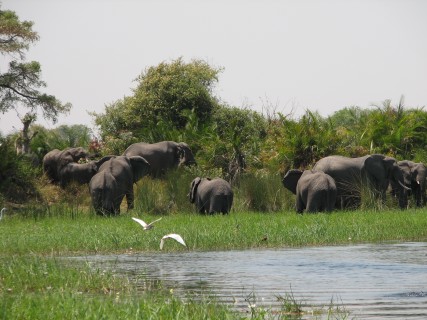 |
 |
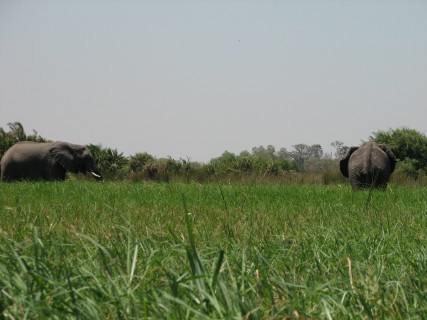 |
 |
 |
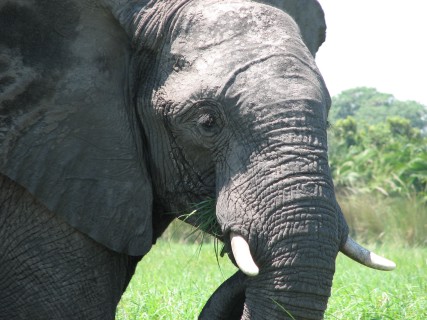 |
After watching the elephants, we turned around, and zipped back up the channel for lunch. The last 2-3 minutes was surreal, as Matt was zipping us around tight corners in extremely shallow water while birds were flying everywhere, game was all over the place left and right – words cannot express how nice it was. The pictures and video don't do it justice either.
Lunch was good – we learned some about how the Delta was formed and some of Botswana 's history. We also saw more game and birds hanging out together. We got picked up by the Mombo people and were driven back to camp. We passed by a lot more game, and noted the grass was much greener than elsewhere – almost looked like a golf course in places. Near camp we saw a Cape Buffalo carcass that was relatively recent – the legs were still in the middle of the road (well, 2 were off to the side).
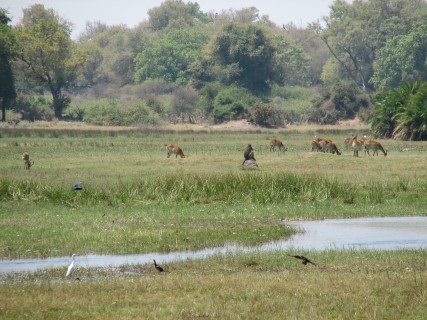 |
 |
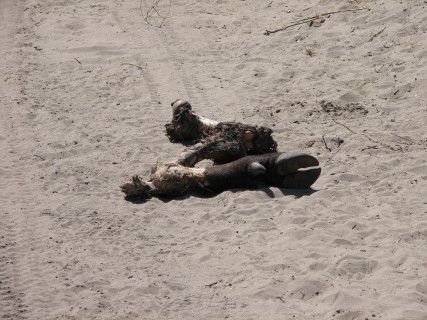 |
The camp was much nicer than even Xigera, with a enormous lounge and great view of the floodplain. Our tent was at least twice as big as all of the others, with an outdoor sala, an outdoor chair and tables, an outdoor shower with a view, a double shower indoors, a double sink, a lounge, and a desk. We didn't notice any of this at first, however, because there was a newborn elephant outside, not more than 100 yards from our sala along with the rest of his family.
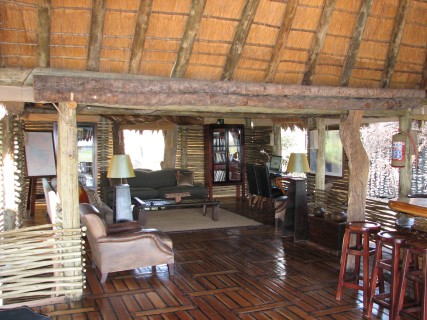 |
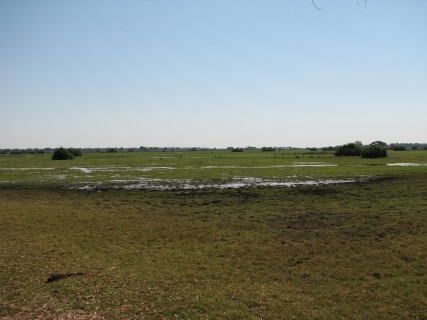 |
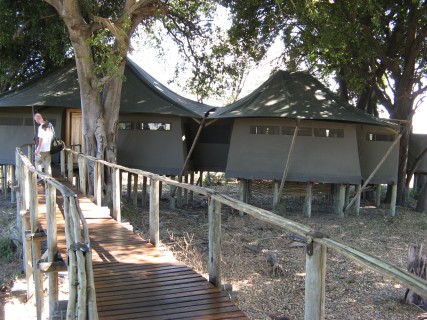 |
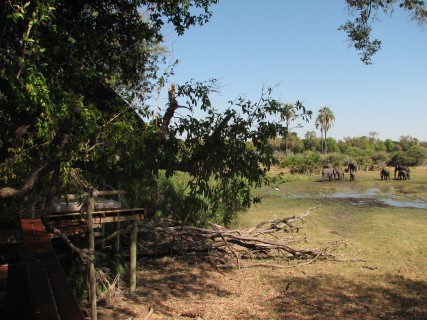 |
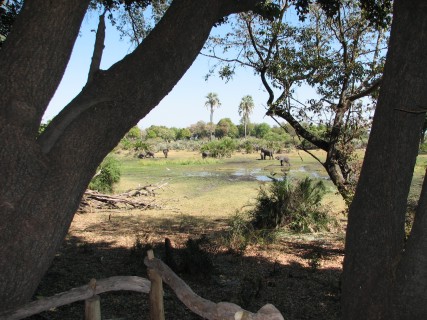 |
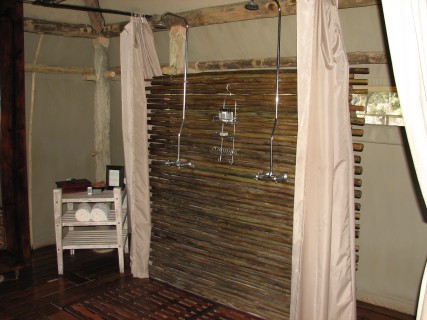 |
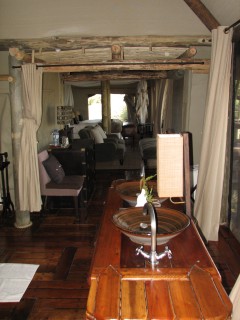 |
 |
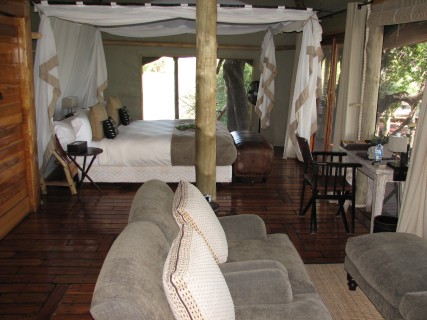 |
 |
 |
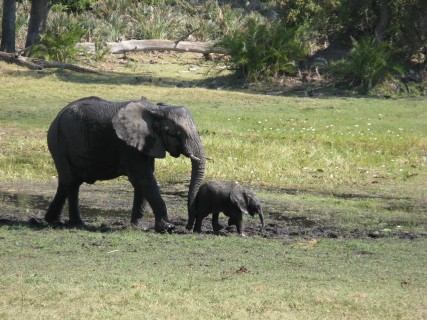 |
Within 5 minutes of our afternoon game drive, our guide Malinga had located a male lion for us – two actually. They were the two from the family that had actually eaten – but not caught – the buffalo that morning. Malinga explained there were two large prides and one medium pride. Matata has 26 members, and lives generally on the Eastern part of the island. Moporota has 22 members, and lives generally on the Western part of the island. West has 11 members, and lives generally on the Southern part of the island. Apparently "West" moved at some point, or was just poorly named. Malinga explained how expulsion of young males and the hierarchial structure in general prevents inbreeding.
After seeing the lions we drove around for a bit and saw a number of other things, including slender mongoose, giraffe, Swainson's francolin, and zebra. Malinga explained how acacia trees release tannins when animals start eating them, and these tannins make the tree taste very bitter. Giraffes became wise to this, however, so will eat at a given tree for less than 15 minutes before moving away. We came upon some female lions from Moporota, digesting from the morning, but only about half of them. Both Crystal and Justin managed to get the exact same photo at the same time of a lioness growling – okay, yawning.
 |
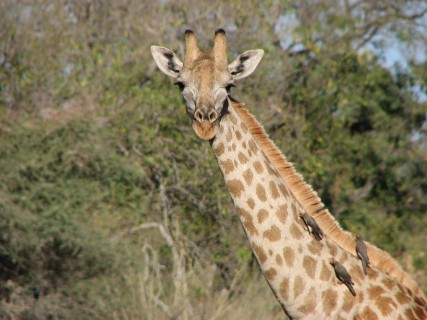 |
 |
 |
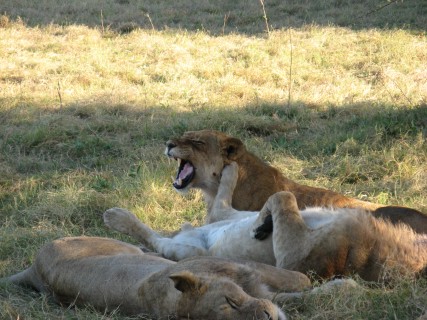 |
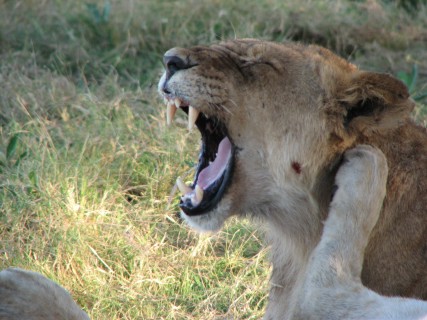 |
We also saw a number of other animals besides lions. We saw a lourie. We saw some wildebeest and zebra, and learned that these two species usually travel together and stay in the same places. There were a number of jackals out, and they made loud sounds that sounded a little like a rat terrier or Chihuahua barking. Malinga explained how rhinos (and also impala) have dropping medians, meaning that the dominant male and the females will make all of their dropping on the perimeter of their area to mark their territory. He also explained that warthogs have warts on their face to protect their eyes when fighting – males have 4 warts and females have 2.
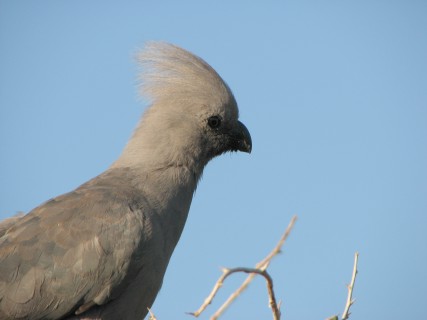 |
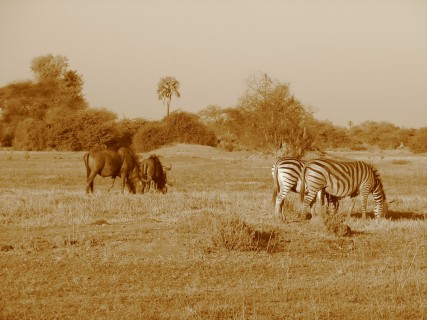 |
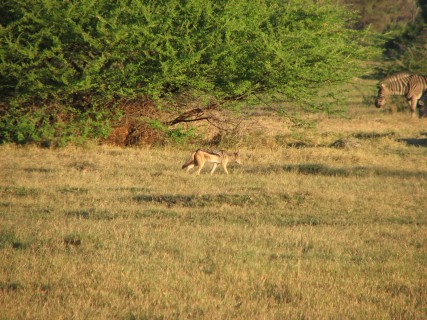 |
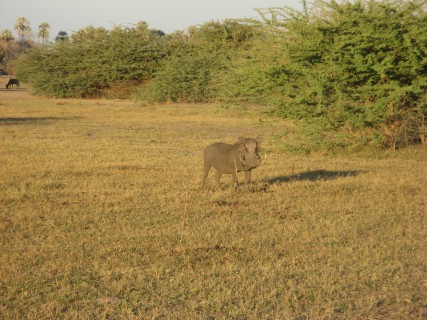 |
On the way back we saw another male lion, this time from the Matata group. Again, we got nearly identical photos of him, being the "King of the Jungle" (far and close).
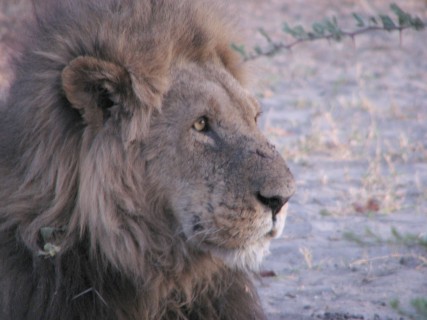 |
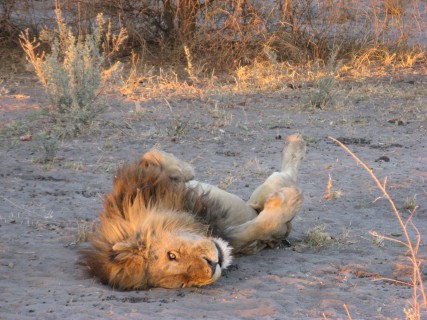 |
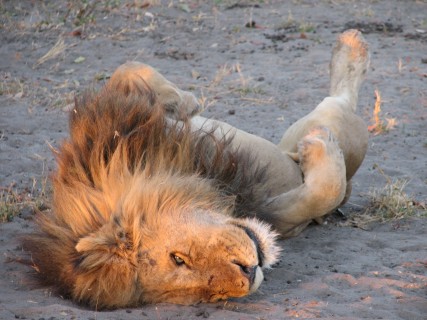 |
Dinner was good, but there were two couples near us from Del Mar and Rancho Santa Fe loudly talking about rich people stuff (like private planes) which was annoying and made us wince a couple of times. We went back to our massively oversized tent and went to sleep on the bed, which was the same size as all the other beds.